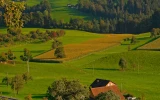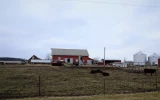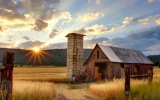Farm Structure vs. Building: Key Difference Explained
Farm structure and building are both necessary components of successful agricultural operations. While they may appear similar, there are key differences between the two. In this context, it is essential to understand the key differences in farm structure and building and how they have evolved to meet the changing needs of agriculture.
Farm structures are generally built with the purpose of housing and caring for animals and facilitating the use of equipment and other resources, while buildings are generally constructed to provide a space to live or do business in, such as houses and offices.
Explore their uses and legal considerations that will provide insight into the challenges faced by farmers in the past and present, as well as the opportunities and innovations that have emerged in modern farming practices.
Summary
- A farm structure includes everything from the fences to the outbuildings, while a farm building pertains to the construction of actual buildings, such as barns and silos.
- Farm structures are typically made of materials like wood and metal, while farm buildings are made with more durable materials like brick and concrete.
- Farm structures are generally designed to protect livestock and crops, while farm buildings are designed to provide storage and shelter for that same livestock and crops.
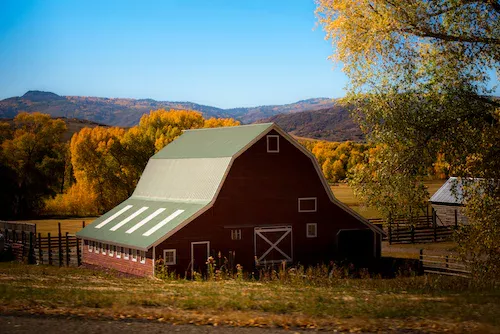
On this page:
Key Difference Between A Farm Structure and A Building
Farm structures are typically built to provide shelter and care for animals, such as livestock, horses, poultry, and other farm animals. They also provide a space for the storage and use of equipment and tools necessary for the operation of a farm.
Farm structures typically include barns, stables, sheds, greenhouses, and other outbuildings. These structures are designed to protect animals from extreme weather conditions, provide them with ample space, and allow for easy access to food, water, and other resources. They also provide a secure environment for the storage of farm equipment, tools, and supplies.
Buildings, on the other hand, are generally built to provide a space to live or do business in. This includes houses, apartments, condominiums, businesses, and offices. Buildings are typically constructed to provide a safe and comfortable environment for occupants.
They are designed to provide adequate space, access to resources, and safety features such as fire-proofing, security systems, and emergency exits. Buildings also provide a sense of privacy and security to occupants, while also providing insulation from weather and other environmental conditions.
Definition of a Farm Structure vs. Building
A farm structure is any building, enclosure, or structure used in the production of agricultural products. Examples of farm structures include barns, silos, greenhouses, sheds, and other structures used for storage, shelter, and production.
A building is a structure with walls and a roof that is used for permanent occupancy. Buildings typically include a foundation and a frame that supports the walls, roof, and other components. Common building types include single-family dwellings, apartment buildings, offices, stores, factories, and churches.
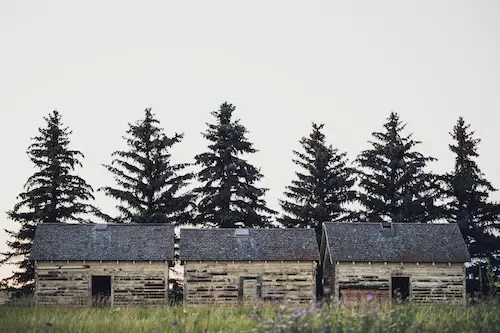
3 Similarities Between a Farm Structure and a Building
Farm structures and buildings have a lot in common. Explore this list of similarities between the two.
1. Both a farm structure and a building have walls and a roof
A barn is a common farm structure. It is typically a large, wooden structure with a high, sloping roof and an open area for animals to enter. The walls are usually constructed from heavy timber and the roof is typically made of metal or wood shingles.
A detached single-family home is a common building with walls and a roof. It typically has two stories, an exterior made of brick or siding, and windows and doors with trim around them. The roof is usually made of asphalt shingles and the walls are usually constructed from wood or metal framing and insulation.
2. Both may have gutters, downspouts, or other drainage features to protect the structure from water damage
Farm structure has:
- Gutters collect rainwater from the roof and direct it away from the structure to prevent the walls and foundation from moisture damage.
- Downspouts collect rainwater from the gutter and direct it away from the structure.
- Roof eave extensions extend the roofline and provide a barrier between the roof and the walls to keep water from seeping in.
- Flashing to seal all openings in the roof, such as around chimneys, skylights, and vents, to prevent water from entering the structure.
A building may also have:
- Gutters collect rainwater from the roof and direct it away from the structure to prevent the walls and foundation from moisture damage.
- Downspouts collect rainwater from the gutter and direct it away from the structure.
- Window awnings to provide shade and protection from rain and snow to windows and doors.
- Gravel or concrete paths to direct water away from the building and prevent pooling near the structure.
- Foundation drains collect water near the foundation and redirect it away from the building.
3. Both may have decks, patios, or other outdoor features to provide additional living space
A farm structure such as a barn or shed may have a large wraparound deck with stairs leading up to the main entrance. This deck could be made of pressure-treated wood and have a railing around it for safety. The deck could be used for outdoor activities such as barbecues or for relaxing and enjoying the view of the surrounding land.
A building such as a house or an apartment may have a smaller deck or patio off the back or side of the structure. This deck could be made of wood, composite, or stone and have a railing or fence around it to provide privacy. It could be used for outdoor dining, entertaining, or just relaxing in the sun. A fire pit could be built into the deck for cooler evenings.
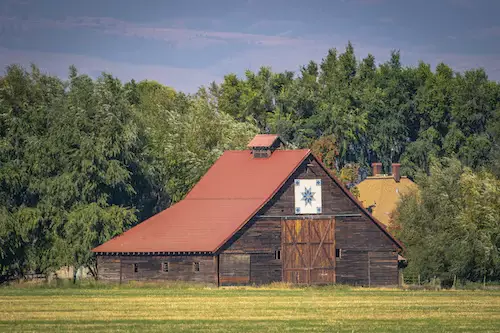
Differences Between a Farm Structure vs. Building in Maintenance Requirements
Maintenance requirements for a farm structure such as a barn or shed will differ from those of a building.
For a farm structure, maintenance may include:
- Periodic inspection of the roof and exterior walls for signs of wear and tear, as well as inspection of the interior for structural integrity.
- Periodic cleaning and painting of the exterior, as well as cleaning and sealing the interior surfaces to protect them from moisture and pests.
In contrast, maintenance of a building will typically include:
- More frequent inspection of all components, including the roof, walls, windows, doors, and foundation.
- Regular maintenance may include cleaning and painting the exterior, and cleaning and sealing the interior.
- More frequent inspections may be required to ensure that the building’s electrical, plumbing, and HVAC systems are functioning properly.
Legal Considerations of A Farm Structure vs. Building
There are also differences between a farm structure and a building when it comes to their legal considerations.
For a farm structure, the legal considerations may include:
- Zoning laws for agricultural buildings include restrictions on size, height, and location.
- Requirements for the type of building and the materials used, including fire safety regulations, building codes, and energy efficiency requirements.
- Permits from state and local agencies may also require special insurance coverage.
- Regulations on hazardous materials, such as pesticides and fertilizers, may differ for agricultural structures.
- Meet minimum size requirements for the type of animals being housed if any.
Legal considerations of a building will typically include:
- Building codes will need to be met to ensure the safety of the building and its occupants.
- Building permits may be required.
- Structures may be subject to local noise and air pollution laws.
- Building materials may be subject to certain regulations, such as fire safety requirements.
- May be subject to certain taxes, depending on the state and local laws.
